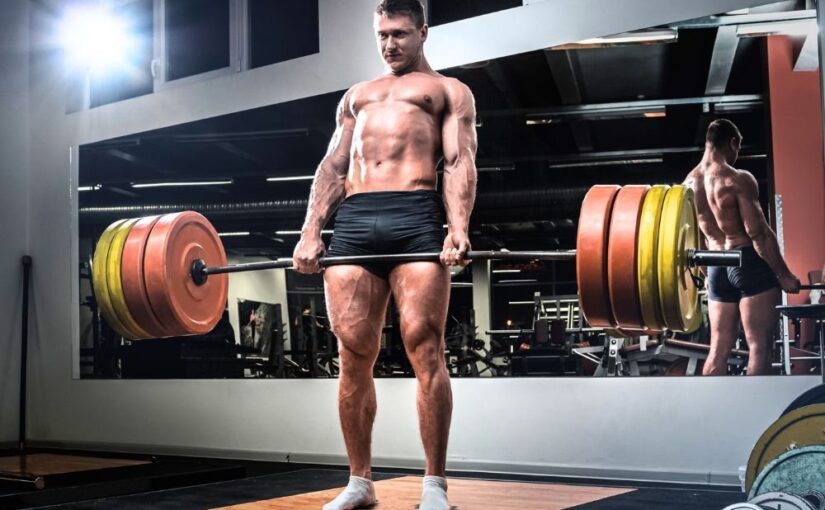Building muscle size and strength—commonly referred to as hypertrophy—requires a strategic approach to training. Understanding the most effective methods can help you maximize your gains and reach your fitness goals. Here, we explore several proven training methods to boost hypertrophy.
1. Progressive Overload
To begin with, progressive overload is the foundation of any successful strength training program. This means gradually increasing the demands on your muscles.
You can achieve this by:
- Increasing Weights: Regularly add weight to your lifts.
- Increasing Repetitions: Aim to do more reps with the same weight.
- Increasing Volume: Add more sets to your workout.
- Improving Form and Technique: Focusing on better execution can enhance muscle engagement.
Consistently challenging your muscles is essential for growth.
2. Compound Exercises
Compound exercises involve multiple muscle groups and joints, making them highly effective for hypertrophy. Key compound lifts include:
- Squats: Target the legs, core, and lower back.
- Deadlifts: Engage the entire posterior chain.
- Bench Press: Works the chest, shoulders, and triceps.
- Pull-Ups/Chin-Ups: Great for back and biceps development.
These exercises not only promote strength but also stimulate a greater hormonal response, further enhancing muscle growth.
3. Isolation Exercises
While compound lifts are vital, isolation exercises also play a significant role in targeting specific muscles for hypertrophy. Incorporate movements such as:
- Bicep Curls: Focus on the biceps.
- Tricep Extensions: Target the triceps.
- Lateral Raises: Work the shoulders.
Including isolation exercises can help balance muscle development and address any weaknesses or imbalances.
4. Training Volume and Frequency
Training volume refers to the total amount of weight lifted in a workout, calculated as sets x reps x weight. Research suggests that higher training volumes are effective for hypertrophy. Aim for:
- 3 to 5 Sets: For major lifts.
- 8 to 12 Repetitions: The ideal rep range for hypertrophy.
Additionally, training frequency—how often you work a muscle group—should be considered. Hitting each muscle group 2 to 3 times per week can maximize growth.
5. Time Under Tension (TUT)
Time under tension refers to how long a muscle is under strain during an exercise. Increasing TUT can stimulate hypertrophy by enhancing muscle fatigue and metabolic stress. To incorporate TUT:
- Slow Down Your Reps: Use a 2-3 second eccentric (lowering) phase.
- Pause at Peak Contraction: Hold the weight briefly at the top of the lift.
This method can lead to greater muscle fiber recruitment and growth.
6. Variety in Training
Using that same routine can lead to plateaus. Incorporate variety by:
- Changing Exercises: Rotate different lifts for each muscle group.
- Adjusting Rep Ranges: Occasionally switch between higher and lower reps.
- Varying Training Techniques: Try supersets, drop sets, or circuit training.
Variety not only keeps workouts interesting but also challenges your muscles in new ways, promoting growth.
7. Proper Nutrition and Recovery
You don’t build muscle in the gym alone—your body needs proper nutrition and recovery, too. Focus on:
- Protein Intake: Aim for 1.6 to 2.2 grams of protein per kilogram of body weight to support muscle repair and growth.
- Caloric Surplus: Consume more calories than you burn to provide the necessary energy for growth.
- Hydration: Staying well-hydrated aids in performance and recovery.
- Adequate Rest: Ensure you’re getting enough sleep and recovery time between workouts.
Conclusion
Achieving hypertrophy requires a multi-faceted approach that includes effective training methods, proper nutrition, and sufficient recovery. By incorporating progressive overload, compound and isolation exercises, managing training volume and frequency, focusing on time under tension, introducing variety, and supporting your efforts with good nutrition and recovery practices, you can effectively increase both size and strength. Consistency and dedication are key—stay committed to your training, and the results will follow.
Frequently Asked Questions (FAQ)
Hypertrophy refers to the increase in muscle size that occurs when muscle fibers grow in response to resistance training and adequate recovery.
A typical range for hypertrophy is 3–5 sets of 8–12 reps per exercise. This volume promotes muscle fatigue and growth when paired with proper intensity.
Yes. Progressive overload—gradually increasing weight, reps, or volume—is essential to continually challenge muscles and stimulate hypertrophy.
Absolutely. Compound movements build overall strength and mass, while isolation exercises help target specific muscles and correct imbalances.
Recovery is critical. Muscles grow during rest, not workouts. Adequate sleep, nutrition, and rest days are essential for consistent muscle gains.
Related Products for Hypertrophy Training Methods
| Product | Type | Link |
|---|
| Adjustable Dumbbells | Strength Training | View on Amazon |
| Flat/Incline Adjustable Bench | Bench Equipment | View on Amazon |
| Resistance Bands Set | Mobility & Isolation | View on Amazon |
| Barbell and Weight Set | Compound Lifting | View on Amazon |
| Foam Roller | Recovery & Mobility | View on Amazon |
Affiliate Disclaimer
Some of the links above are affiliate links, meaning we may earn a small commission if you purchase through them—at no extra cost to you. These products were selected based on relevance to the training methods discussed.

